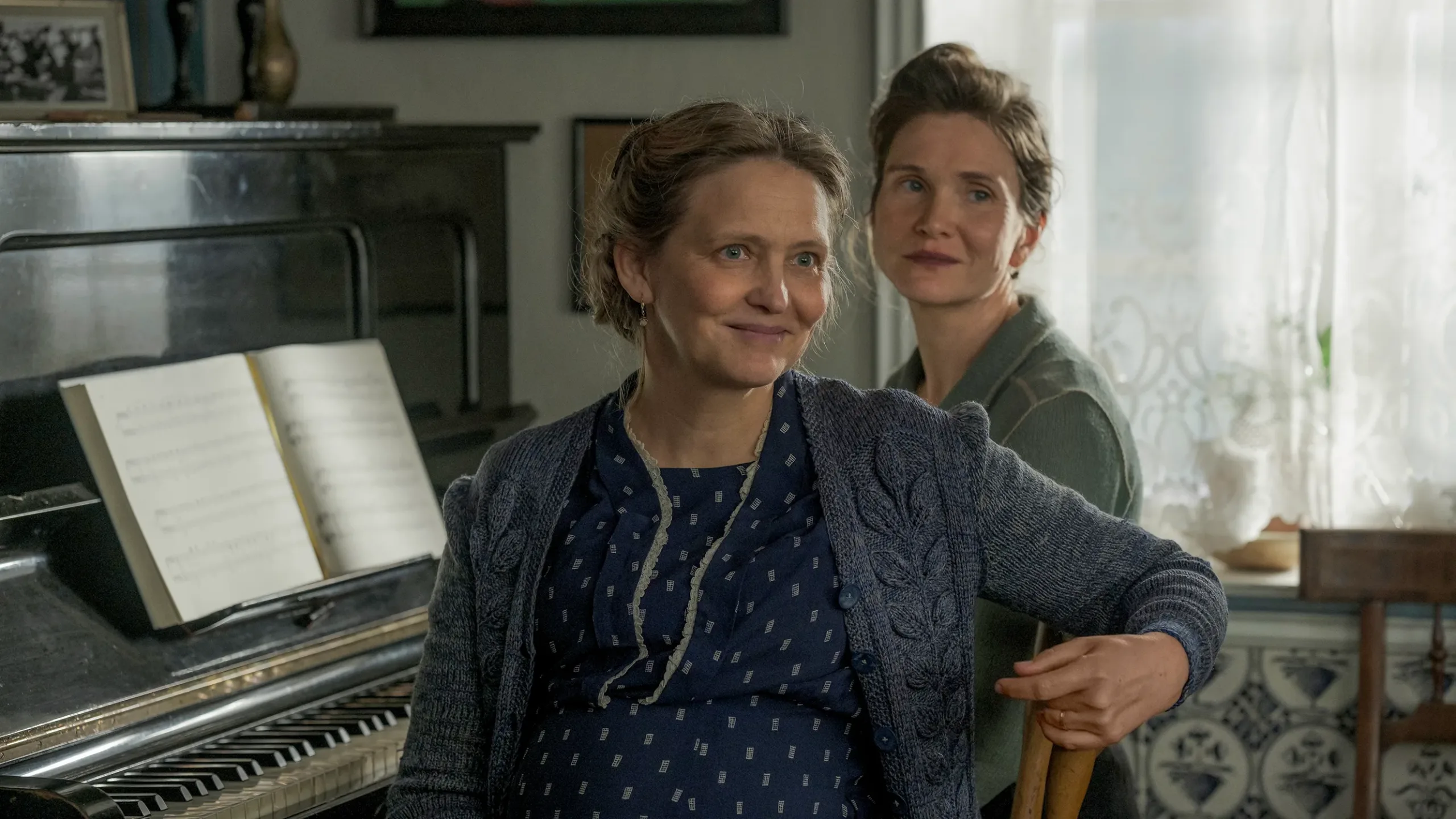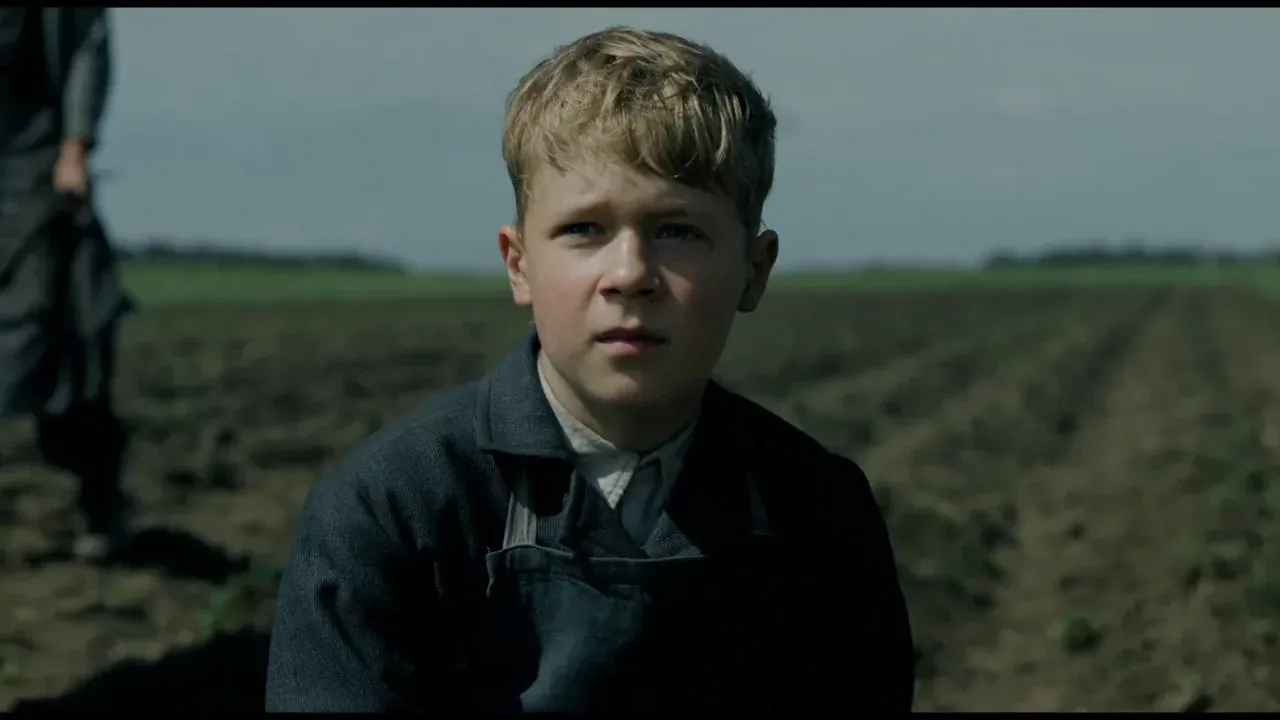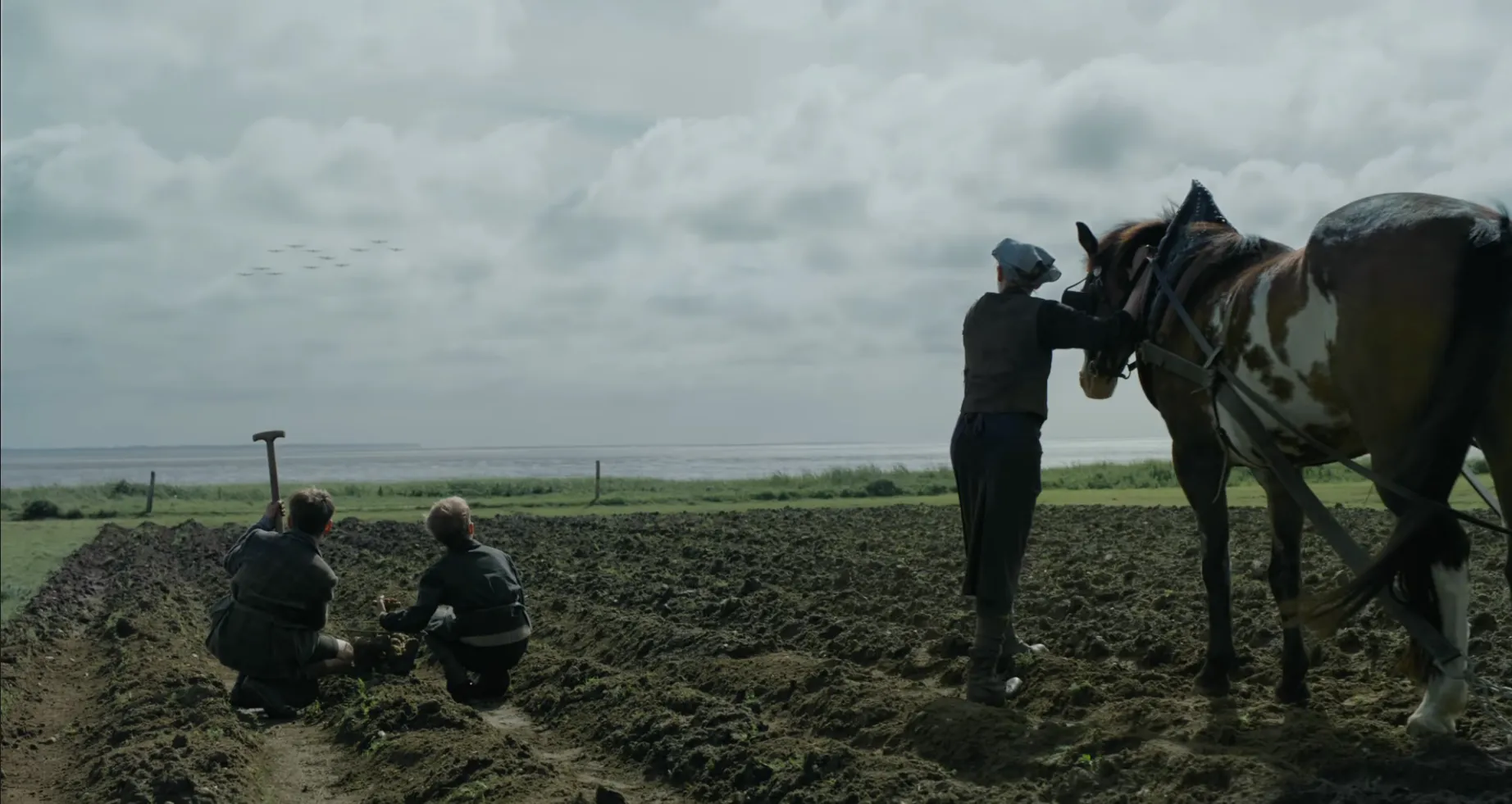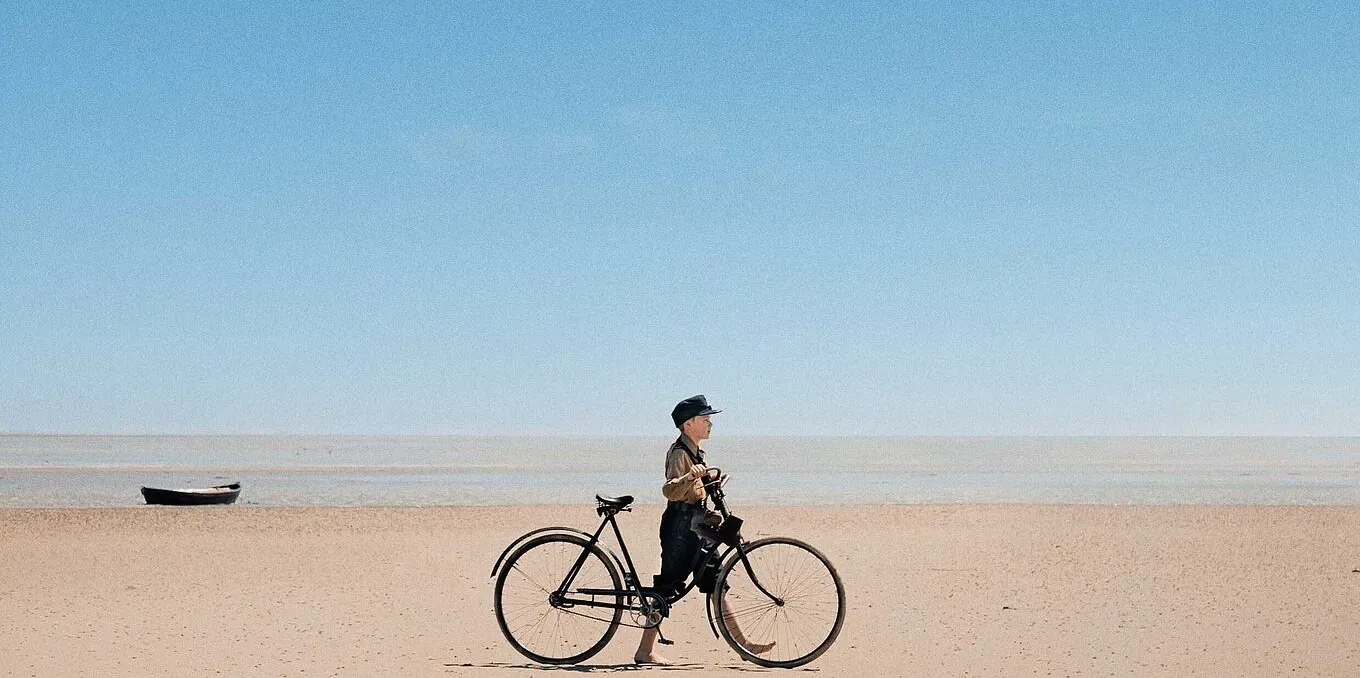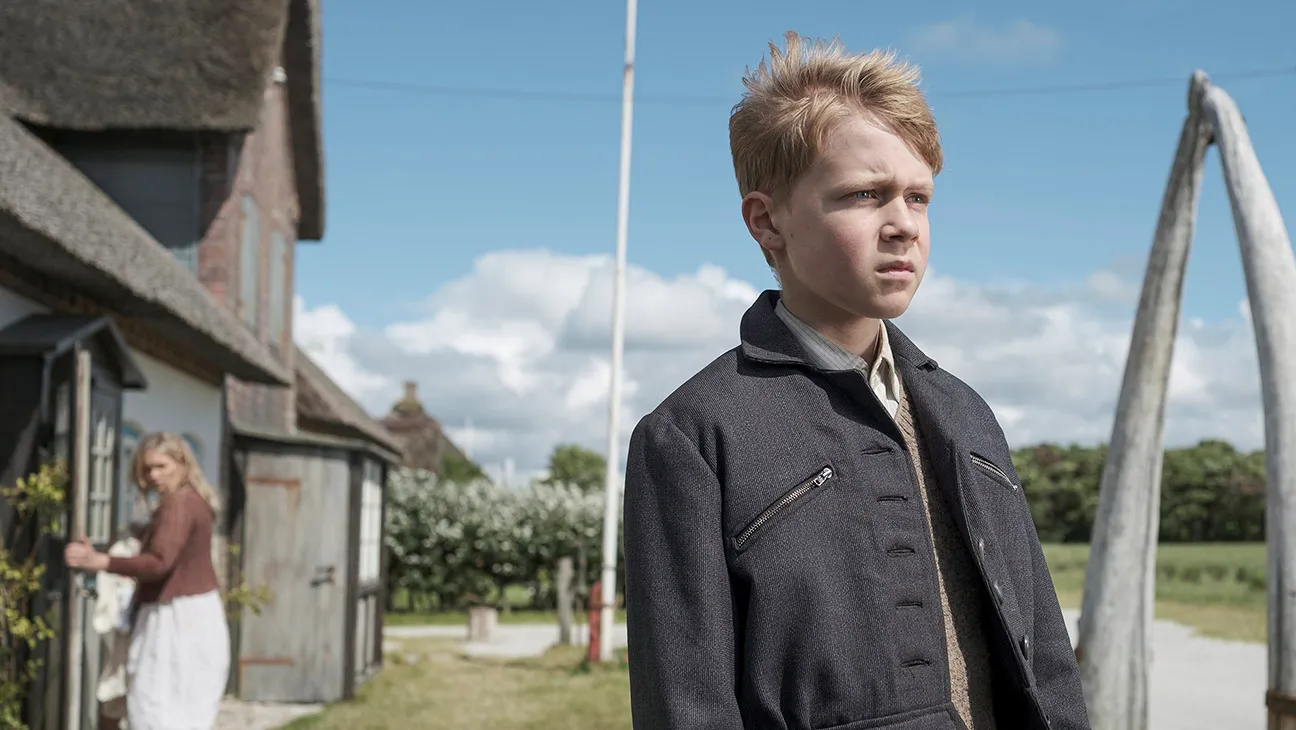The film opens on a vast horizon where grey sea and pale sky merge, a visual motif recalling the austere tableaux of Indian parallel cinema’s salt flats in Satyajit Ray’s Pather Panchali. Here, 12-year-old Nanning stands barefoot on the North Frisian shore, wind tugging at his uniform, a silent witness to history’s collapse. Time is April 1945, and the island’s rhythm—be it the drip of melting snow or the distant drone of RAF fighters—anchors us in those final wartime days.
At its heart lies a simple yet profound journey: a boy’s search for white bread, butter and honey to revive his grieving mother. This quest echoes the mythic errands of Bollywood’s golden-era heroes, whose offerings often serve as portals into wider cultural reckonings. The director’s choice to frame each errand as a discrete episode recalls the chaptered narratives of Amol Palekar’s films, in which quotidian tasks illuminate deeper moral choices.
Cinematography by Karl Walter Lindenlaub employs long takes and muted palettes, each frame evoking the contemplative stillness found in Indian art-house works like The Music Room. Musical cues—organ tones underscoring the tide’s rise—function like Rossen’s tabla accents, marking emotional shifts without heavy orchestration. Editing favors gentle dissolves over hard cuts, fostering a meditative pace that encourages viewers to inhabit Nanning’s interior world.
Through its spare imagery and cultural specificity, the film bridges northern Europe’s wartime narrative with universal themes of survival, loyalty and nascent awareness.
Tides of Identity: Landscape and History
Amrum’s terrain—vast mudflats glinting under a shy spring sun, neat thatched cottages hunkered against Atlantic gusts—serves as both setting and silent narrator. The island’s cold sea air and sudden squalls evoke the elemental power of nature found in Satyajit Ray’s The World of Apu, where monsoon winds underscore characters’ inner turmoil. Here, each muddy expanse carries traces of seal-hunting and potato harvest, rituals that root Nanning’s story in lived traditions.
Wartime pressures ripple through this isolated community as propaganda flags flap over cottages and RAF fighters thrum overhead. Wagonloads of refugees arrive in muddied carts, a detail shot with the documentary realism akin to Mrinal Sen’s courtroom dramas. These touches remind viewers that, much like in Indian parallel cinema’s depictions of Partition-era villages, geopolitical shifts invade everyday life.
Language becomes a marker of belonging: locals converse in Öömrang—their North Frisian tongue—while Nanning’s family reverts to standard German under closed doors. This dialect split parallels the linguistic authenticity prized in Marathi and Bengali art-house films, where regional speech grounds narrative credibility.
Symbolism emerges in the island’s tidal divide, a natural boundary that isolates staunch Nazi loyalists at high tide and reunites neighbors at low. Quicksand patches conceal unseen peril, much as Chetan Anand’s wartime sequences in Haqeeqat used desert mirages to evoke moral danger. On Amrum, geography and history entwine, charting shifting loyalties and hidden risks.
Faces of Loyalty and Resistance
Jasper Billerbeck’s Nanning channels the earnest intensity of young protagonists in Indian parallel films like Salaam Bombay!, yet his journey feels grounded in northern Europe’s harsh terrain. Barefoot across mudflats, he carries the weight of adult illusions, moving from seal hunts under stormy skies to silent fieldwork at dawn. His wide-eyed resolve conveys how indoctrination seeps into childhood, even as his small deeds reveal a budding conscience.
Laura Tonke’s Hille embodies quiet devastation. In scenes that recall Smita Patil’s nuanced portrayals of grief, Hille’s hollow gaze and refusal to eat white bread, butter or honey capture the collapse of faith in an ideology. Her breakdown steers Nanning’s quest, drawing on cultural rituals of nourishment familiar to viewers of rural Bollywood dramas, where food often symbolizes hope.
Lisa Hagmeister’s Aunt Ena stands as a moral anchor. Her gentle defiance—spoken in hushed tones against the clang of swastikas—echoes the principled resistance found in Bengali art-house heroines. She cradles her pregnancy as promise of renewal, her very presence challenging inherited beliefs.
Among supporting turns, Grandpa Arjan’s rigid loyalty offers a stark counterpoint, while Diane Kruger’s Tessa recalls the empathetic farmers of regional Indian cinema, guiding Nanning with soft authority. Kian Köppke’s Hermann provides a peer mirror, their shared dreams threading through the film like a hopeful refrain.
From Hearth to Horizon: A Three-Act Moral Odyssey
The film opens on daily rituals—wagon wheels crunching over pebbled paths, ovens fired for potato loaves—while muted trumpets of distant RAF patrols punctuate the soundtrack. Family tension simmers as Hille retreats into her room, her trembling hands a stark counterpoint to Nanning’s steady chores. This reserved pacing recalls the domestic focus of Adoor Gopalakrishnan’s work, where small gestures reveal deep fissures in communal life under duress.
Nanning’s quest unfolds in three deliberate stages—first, the chemist’s locked flour store; next, the veteran baker’s guarded sugar sack; and finally, the seal-trapper’s hidden cache of butter and honey. Each encounter shifts tone from mythic to visceral: the chemist’s wary glance evokes the aloof elders of parallel cinema’s village dramas, while the baker’s trembling reveal of sugar mirrors the raw honesty in Mani Kaul’s character portraits. Yet brutal realism crashes in with a rabbit gutting scene and a seal shot at point-blank range, jolting viewers like the stark violence in Pather Panchali’s cyclone sequence.
As news of defeat arrives, the island’s flags drop in unison—a ritual echoing the mass silences of war-torn communities in Mrinal Sen’s films. The town gathers to lower swastikas, and Hille, emerging from her bed, tastes a sliver of white bread, her recovery as tentative as the first green shoots in a scorched field. Nanning stands at the foreshore, horizon before him, a silent testament to his inner shift from dutiful child to questioning observer.
The innocence corrupted by doctrine emerges with subtle clarity, mirroring stories of youth caught in ideological crossfires seen in Indian wartime dramas. Family bonds strain against personal conscience, much like sibling loyalties tested in Chemmeen. Nature’s indifferent tides and hidden quicksand reflect human cruelty and moral ambiguity, while Nanning’s search for sustenance becomes a universal metaphor for hope amid collapse.
Elemental Canvas and Whispering Sound
Karl Walter Lindenlaub’s lens bathes Amrum in pale blue tones, each frame calibrated like an Anup Singh composition in The Name of a River. Wide shots extend into misty horizons, underscoring the island’s solitude, while closeups linger on mud-streaked boots or trembling hands, much as in Indian art-house films where personal anguish is writ large against a sweeping backdrop.
Production design grounds this aesthetic in authenticity: swastika-furled flags flutter atop weathered cottages, garments bear wartime wear, and sparse furnishings—a wooden crate for flour, a single enamel mug—signal scarcity with quiet eloquence. These details recall the textured realism of Mandi or Charulata, where modest props convey broader social strains.
Joern Martens’ soundscape hums with ambient wind, creaking cartwheels and distant seabird cries, creating a living backdrop akin to the rural acoustics in Pather Panchali. Music punctuates rather than overwhelms: a simple piano motif or stray violin note surfaces at key emotional beats, evoking the restraint of A.R. Rahman’s minimal cues in Roja.
Editing unfolds in sync with tidal rhythms—linger on a rising tide, then cut to Nanning’s pedal stroke—so that calm sections give way to sudden jolts of violence, as when a rabbit is gutted or a seal falls under a rifle. This pacing mirrors the ebb and flow of human hope against elemental forces.
Poised Precision: Direction and Screenwriting
Fatih Akin’s stewardship of Bohm’s memoir-infused script feels akin to the collaborative spirit of Shyam Benegal’s adaptations, where source material guides rather than dictates the director’s vision. Akin resists grand cinematic flourishes, favoring intimate closeups and lingering silences that echo the emotional focus found in Ankur.
Together with Hark Bohm, Akin structures the screenplay around three distinct errands—flour, sugar, dairy—creating a narrative scaffold reminiscent of Satyajit Ray’s chaptered storytelling in Charulata. Each segment functions as a parable: austere tasks reveal character depths with minimal dialogue. When locals speak in Öömrang versus standard German, those shifts register identity tensions as sharply as regional dialects in Marathi cinema highlight social divides.
Character growth emerges through action. Nanning’s barefoot forays and the chemist’s cryptic warnings convey moral stakes more effectively than expository monologues. This task-driven development aligns with the cinematic economy of Mani Kaul’s works, where subtext resides in gestures and glances.
The screenplay balances poetic restraint and raw immediacy: a quietly forged bond over seal meat follows a graphic rabbit scene without sliding into melodrama. Akin skirts sentimental tropes, instead letting the island’s austere beauty and a child’s unwavering determination pose moral questions with elegant simplicity.
Echoes Across Shores and Eras
Amrum marks a turn in Akin’s repertoire, stepping away from the high-voltage melodramas of The Golden Glove and the sleek thriller textures of The Edge of Heaven. Here, he embraces the intimacy of small-scale storytelling, much like the shift seen when Bollywood auteurs such as Anurag Kashyap return to low-key narratives after mainstream successes. This return to a pared-back canvas allows Akin’s precision—so evident in Nanning’s quiet determination—to resonate with greater force.
In a world where ideological fervor still fuels unrest, Amrum’s portrait of a child caught in political tides feels urgently global. The film’s depiction of moral indoctrination evokes parallels with contemporary regional cinema in India, where filmmakers grapple with rising nationalism through character-driven tales. Nanning’s evolving awareness mirrors those protagonists who question inherited dogmas, a theme common to Malayalam art-house dramas exploring family allegiance against broader social pressures.
Viewers are left with questions more than solutions, invited to ponder how loyalty and innocence collide under forceful doctrines. The enduring image of Nanning standing at the water’s edge—long coat flapping, horizon before him—offers a potent visual refrain. Writers drafting fuller analyses might weave in local lore of Amrum’s seafarers or draw parallels to wartime childhood vignettes in global cinema, illuminating how small acts of compassion bridge divides across time and place.
Full Credits
Director: Fatih Akin
Writers: Hark Bohm, Fatih Akin
Producers: Lara Förtsch
Executive Producers: Benedikt Maurer
Cast: Jasper Billerbeck, Kian Köppke, Laura Tonke, Diane Kruger, Matthias Schweighöfer, Detlev Buck, Lisa Hagmeister, Hark Bohm, Steffen Wink, Lars Jessen
Director of Photography (Cinematographer): Karl Walter Lindenlaub
Editor: Andrew Bird
Composer: Stefan “Hainbach” Götsch
Amrum premiered at the Cannes Film Festival in May 2025 and is scheduled for theatrical release in Germany on September 25, 2025.
The Review
Amrum
Amrum delivers a quietly powerful coming-of-age portrait set against a fading wartime world, its spare imagery and precise direction inviting deep reflection on loyalty, innocence and survival. Jasper Billerbeck’s heartfelt turn and Akin’s restrained storytelling forge an emotional resonance that lingers long after the final frame.
PROS
- Evocative cinematography captures island’s stark beauty
- Jasper Billerbeck’s performance feels lived-in and true
- Authentic period detail immerses viewers in 1945 rural Germany
- Soundscape and score underscore mood without excess
CONS
- Measured pacing may test patience
- Key character arcs receive limited development
- Graphic scenes of animal slaughter can unsettle
- Ending leaves some narrative threads unresolved









































